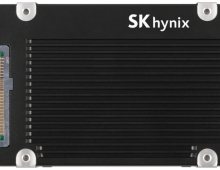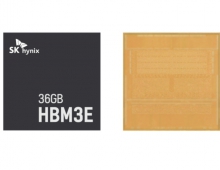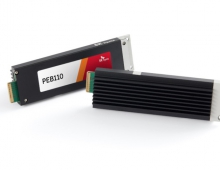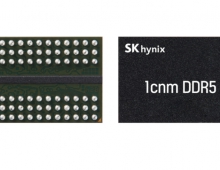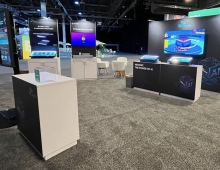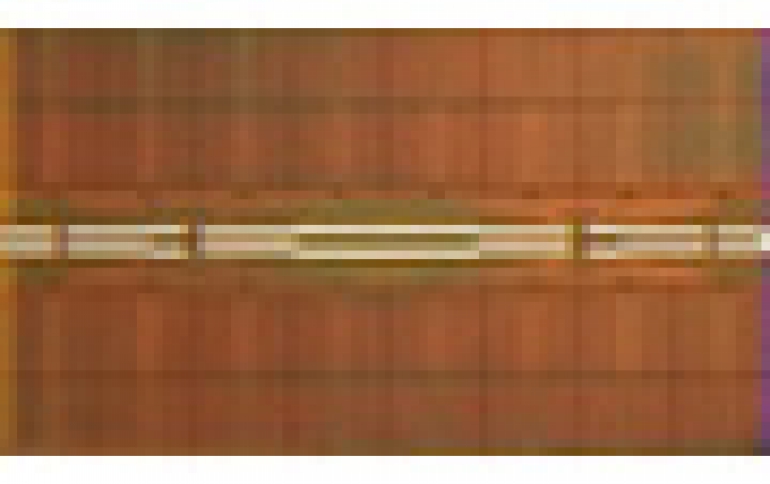
Elpida Completes Development of 1-Gigabit GDDR5
Elpida Memory today announced that it had developed a 1-gigabit GDDR5 that operates at a world-class high speed of 6Gbps.
The new graphic memory device marks Elpida's first successful step in the GDDR market.
Applications for GDDR memory devices used with GPU (Graphics Processing Unit) are found not only in such graphic processing equipment as game consoles and PC graphics cards but also in equipment that require high-performance computing for use in such areas as science and technology, physical simulation, digital image processing and video conversion.
In August Elpida announced plans to enter the graphics DRAM business based on its acquisition of GDDR design assets from the German company Qimonda AG. The successful development of the new GDDR product in only three months using these design assets was made possible by close cooperation between Elpida's new Munich Design Center in Germany, an Elpida Japan-based technology team and engineers at Taiwan-based Winbond Electronics Corporation.
After concluding an evaluation at the Munich Design Center, sample shipments will start in December and mass production is expected to begin in the second quarter (April-June) of CY 2010.
Elpida is now involved in all areas of the DRAM market - commodity DRAMs, GDDR for the graphics market, high-speed XDR DRAM and Mobile RAM for mobile equipment.
1-gigabit GDDR5 Overview
Product name: EDW1032BABG
Memory density: 1-gigabit
Speed: 6Gbps
Configuration: 32-megabit x32 / (64-megabit x16)
Special features
- Two I/O configurations - x32 and x16
- To save mass manufacturing testing costs Elpida's proprietary test method is used, making an ultra-high speed tester unnecessary
Elpida Memory also today held a ceremony in Munich, Germany to officially open its High Speed DRAM Test Laboratory at its Munich Design Center.
The Munich Design Center began operations in May as a graphics DRAM (GDDR) development facility and has been focusing on GDDR design work since then. However, with today's opening ceremony for the high-speed DRAM test laboratory, the Center now reaches full-scale operations. The new test laboratory is equipped with high-speed memory testing and analytical equipment for use in planning and developing the features of new and next-generation products and supporting actual product design, development and evaluation. The Center will also conduct design and development activities that incorporate operational testing and analysis of actual systems.
In December Elpida plans to begin sample shipments of GDDR3 products that have already been evaluated within the Munich Test laboratory of Elpida. In addition, Elpida itself is developing a 2-gigabit GDDR5 that it plans to begin mass manufacturing in the second half of 2010.
In August Elpida announced plans to enter the graphics DRAM business based on its acquisition of GDDR design assets from the German company Qimonda AG. The successful development of the new GDDR product in only three months using these design assets was made possible by close cooperation between Elpida's new Munich Design Center in Germany, an Elpida Japan-based technology team and engineers at Taiwan-based Winbond Electronics Corporation.
After concluding an evaluation at the Munich Design Center, sample shipments will start in December and mass production is expected to begin in the second quarter (April-June) of CY 2010.
Elpida is now involved in all areas of the DRAM market - commodity DRAMs, GDDR for the graphics market, high-speed XDR DRAM and Mobile RAM for mobile equipment.
1-gigabit GDDR5 Overview
Product name: EDW1032BABG
Memory density: 1-gigabit
Speed: 6Gbps
Configuration: 32-megabit x32 / (64-megabit x16)
Special features
- Two I/O configurations - x32 and x16
- To save mass manufacturing testing costs Elpida's proprietary test method is used, making an ultra-high speed tester unnecessary
Elpida Memory also today held a ceremony in Munich, Germany to officially open its High Speed DRAM Test Laboratory at its Munich Design Center.
The Munich Design Center began operations in May as a graphics DRAM (GDDR) development facility and has been focusing on GDDR design work since then. However, with today's opening ceremony for the high-speed DRAM test laboratory, the Center now reaches full-scale operations. The new test laboratory is equipped with high-speed memory testing and analytical equipment for use in planning and developing the features of new and next-generation products and supporting actual product design, development and evaluation. The Center will also conduct design and development activities that incorporate operational testing and analysis of actual systems.
In December Elpida plans to begin sample shipments of GDDR3 products that have already been evaluated within the Munich Test laboratory of Elpida. In addition, Elpida itself is developing a 2-gigabit GDDR5 that it plans to begin mass manufacturing in the second half of 2010.

